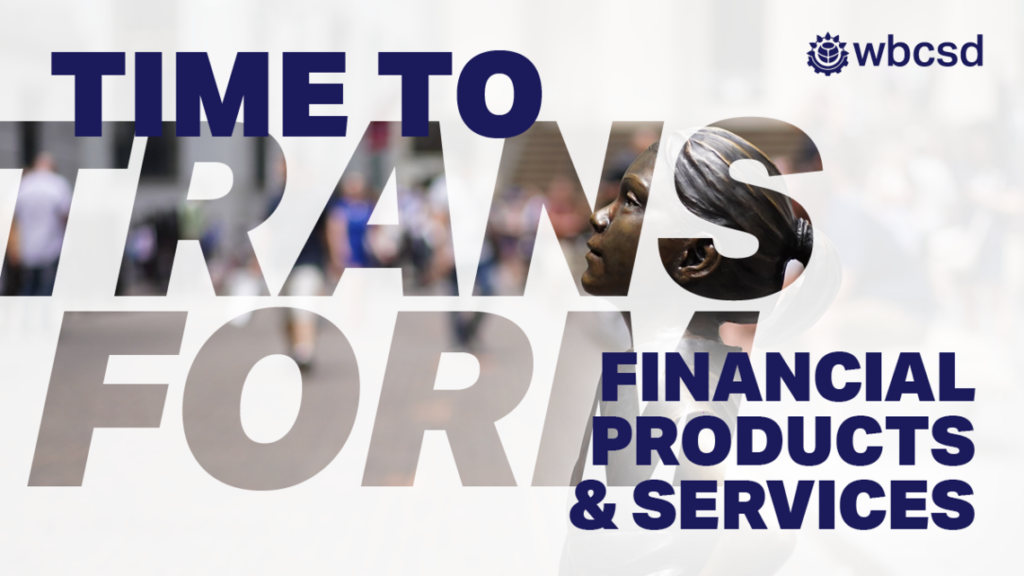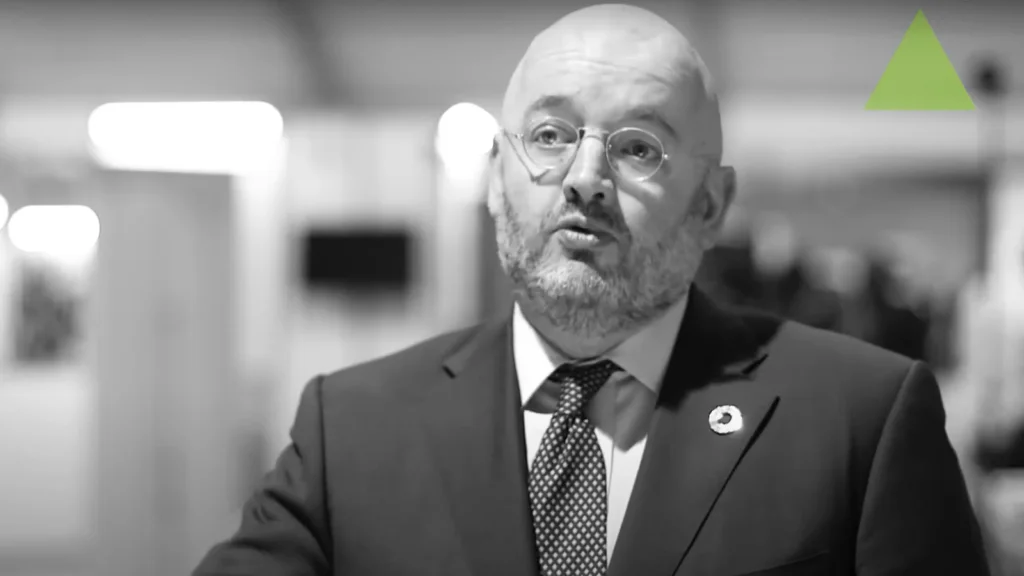Phoenix, AZ, 28 February 2019: 2019 will mark four years since the United Nations (UN) Member States unanimously agreed on the Sustainable Development Goals (SDGs). These goals are a blueprint for peace and prosperity for people and planet by 2030 – a deadline which is starting to loom ever-larger on the horizon.
At the World Business Council for Sustainable Development (WBCSD), we bring together nearly 200 of the world’s most forward-thinking businesses, working together to accelerate the transition to a sustainable world, to target the realization of the SDGs through systems transformation via six programs of work: Circular Economy, Cities and Mobility, Climate and Energy, Food and Nature, People and Refedining Value.
To develop the business solutions that will drive key systems transformation and the achievement of the SDGs, we are strengthening our voice in North America.
In January 2019, Bill Sisson joined WBCSD as Director, WBCSD North America, working together with WBCSD’s teams, members and network towards our shared vision of creating a world where more than 9 billion people are all living well and within the boundaries of our planet, by 2050.
Bill, you are a familiar face at WBCSD. How do you reflect on your years as Liaison Delegate?
Yes, I have more than 10 Liaison Delegate Meetings in Montreux behind me! During this time, I was the Liaison Delegate representing United Technologies. When my career reached full tilt, I was asked by our CEO to work with WBCSD to establish and co-chair a new project on energy efficient buildings. The project added substantive value to our business, not only in terms of our image and reputation, but also by informing the market for the first time. We were the voice of business on the facts, trends and transformative roadmap for the built environment. I continued on as Liaison Delegate while supporting our internal sustainability technology focused initiatives.
I believed then, as I do now, in the important and high-impact role of WBCSD to help guide businesses in the sustainability ambitions that they are setting for themselves. I had no hesitation in accepting this new role, where our North American office can play a key role in helping to drive and achieve those ambitions.
What are some of the challenges of your role as Director, WBCSD North America?
North America presents unique contextual challenges to the business community that are headquartered and operating here. Some are related to aligning with growing global environmental and social regulations, while continuing to operate as a sustainable, Environmental, Social and Governance (ESG)-driven enterprise. Others are associated with public perception of the role of business and its license to operate. In many ways, these challenges are shared globally – however, the way they manifest in North America is quite unique. They require a different voice that will give businesses the license to operate in the global economy, taking into account the more regional challenges.
As such, I see the role of WBCSD as being responsible for representing our globally relevant programs and member-led projects . We need to do this in ways that best position our North American member companies in support of their ESG ambitions and, in growing importance, how they align with the SDGs.
Our goal is always to make more sustainable business more successful and give our members value, impact and voice in the context of the North American market and regulatory system, while maintaining a tight relevance to the expectations in a global marketplace.
What are the elements of your strategic vision?
I see three core elements that are all inter-linked: brand and value, member engagement and expertise.
First, we must build a stronger brand and value relationship. We have to ensure that the broader part of the North American-based organizations recognize WBCSD and the value we provide to businesses in the region. This means positioning the WBCSD brand and the great work of our North American members front and center of all key sustainability discussions. It also means showcasing the high-impact content that our members are producing in the context of the North American market, needs and perspective. Our value and support for collaborative action needs to translate into business solutions and opportunities for our members that increase their market share while ensuring that collective action is directed to creating a sustainable future.
Second, we must engage members in a more structured and driven way. This relates to the capacity to better communicate project-driven work, but it also means creating new regionally-focused opportunities for collaboration among current and new members. North American membership represents 22% of WBCSD today, but given the size of the market, we should have a greater number of members pushing for regional impact.
Finally, we must look forward to bringing increased capacity and expertise to the North American team to support what I believe will be an ever-growing demand for North American-based project leadership.
You recently hosted WBCSD’s Annual Meeting for North American Members. How does this meeting feed into your strategy
We held the meeting ahead of GreenBiz19, as part of a partnership that has grown over the last couple of years. The feedback we received from our session was tremendous and it was wonderful to host a room with such enthusiastic and exceptional professionals. We had a full house, with about 60% members and 40% non-members. The attendees had a chance to take a more detailed look at our work in Circular Economy and the recently-launched Alliance to End Plastic Waste (AEPW), Food and Nature, Natural Climate Solutions and some select areas from our Redefining Value program. I was really grateful to our Geneva and US-based teams for putting excellent expert panels and information sessions. All was well received, the Q&A was enriching and the content created quite an optimistic buzz.
The meeting was an excellent opportunity to find out more about our members’ interests in the North American market. For example, we learned that circular economy, the SDGs and climate-smart solutions are at the top of their priorities. It was interesting to note that the SDGs were also prominently signaled – which Peter Bakker (WBCSD’s President and CEO) elaborated on – would have been unheard of as of a few years ago. We also learned that a great majority see the office in North America playing a major role in increasing opportunities for CEO-level visibility in the region. They also recognize the need to strengthen project workstreams in NA while maintaining global relevance. This is key for the team as we move forward refining the strategy and developing the tactics to address the needs of our members.
An additional element that we introduced for the first time this year, was a convening with North American Liaison Delegates and senior representatives from our membership with a strong presence in the region. The session was tremendously useful to me. Not only because it allowed me to acquaint myself with our members, but because by providing a space to have a candid conversation, we explored their perspectives and discussed the challenges they see ahead in using WBCSD as a resource to help guide them forward in their sustainability priorities.
Having heard the needs and expectations of the North American members, what do you think is needed in terms of leadership to advance a collaborative agenda that will effectively tackle current sustainability challenges?
It is clear that we have made great progress in this area by showing the value of having the CEOs on board of any efforts towards systemic transformation. But again, taking thoughts from the Liaison Delegate breakfast, a key issue that came out of the meeting was the fact that the complexity of the organizational environment requires for not only the CEO to get involved, but also the senior management team. There needs to be buy-in within the middle and higher-level management team to move the interests of the company’s sustainability agenda deeper into the functional aspects of the organization (like finance, operations and legal) to ensure we get maximum impact.
Moreover, there is a need to strengthen corporate governance, to ensure that changes in leadership will not affect sustainability efforts or projects and long-term goals.
What’s next?
The WBCSD team in North America has a lot of work to do in the year ahead. While we have clear objectives on member recruitment, we must maintain a clear focus on the strategic objectives I laid out earlier. We will aim to elevate the WBCSD brand, increase member engagement and CEO level opportunities, continue supporting project specific needs, launch new member scoping workshops, and establish a deeper engagement with key academic and NGO partner organizations. This will be accompanied by our engagement in high-level discussions at key events happening throughout 2019 such as Circularity19 in Minneapolis in June; the High-Level Political Forum on Sustainable Development mid-July in New York City convening Chief Sustainability Officers, or the UN General Assembly Week with the Climate Summit and the SDG Business Forum in late September. Across these gatherings, the North American office needs to become the voice of North American businesses in alignment with the national and global conversations on sustainable systems transformations.
Any final thoughts?
We have a small but enthusiastic team at WBCSD North America, one that is committed and aligned to the strategic direction we’re pursuing. I’d like to personally thank everyone at WBCSD for their warm welcome and in sharing their passions and knowledge with me thus far. I’d also like to thank those members that have reached out to me and shared their views and perspectives on strengthening the impact of the North American operation.
Now, let’s get on with it!




